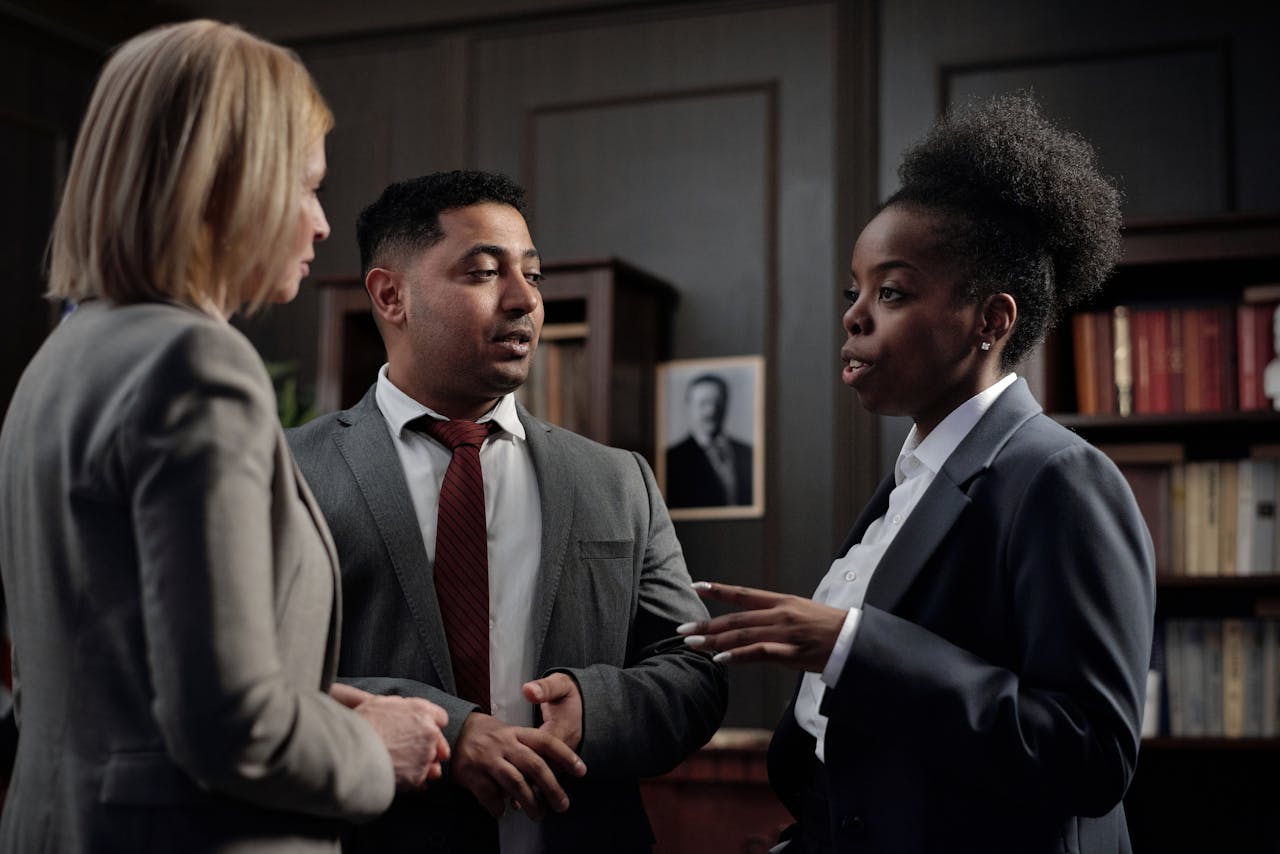An accident is one of the most dreaded events; there are emotions, pain, uncertainty, and paperwork that follow it. If you are an innocent victim of certain harm that was caused by someone else’s carelessness, filing a personal injury claim can help you recover compensation for medical bills, lost wages, and other damages.

But what happens if you weren’t entirely blameless in the accident? Fear not, even if you believe you share some fault, you might still have options.
In this blog post, we’ll explore a one of the questions a personal injury lawyer can answer; can you still pursue a personal injury claim if you were partially at fault for the accident? From comparative negligence to statute of limitation, we’ll cover it all
1. Comparative Negligence Laws
Comparative negligence laws are foundational principles in personal injury law that determine how damages are allocated when multiple parties share fault for an accident. Understanding these laws is critical for individuals seeking compensation after sustaining injuries.
In states that follow pure comparative negligence, plaintiffs can recover damages even if they are predominantly responsible for the accident. However, their compensation is reduced proportionally to their degree of fault.
For instance, if a plaintiff is deemed 30% at fault and the total damages amount to $100,000, their recovery would be capped at $70,000.
Conversely, states that adhere to modified comparative negligence bar plaintiffs from recovering damages if they are equally or more at fault than the other party. These nuances underscore the importance of consulting with a personal injury attorney well-versed in local laws to navigate the complexities of comparative negligence.
2. Contributory Negligence
In jurisdictions that subscribe to contributory negligence principles, even minimal fault on the part of the plaintiff can bar them from recovering any damages. This stringent rule presents significant challenges for injured individuals seeking compensation, as insurance companies and defense attorneys exploit any opportunity to attribute fault to the plaintiff and evade liability. Consequently, plaintiffs must mount robust legal defenses supported by compelling evidence to counter allegations of contributory negligence and secure a favorable outcome. The harsh nature of contributory negligence underscores the need for proactive legal representation to safeguard plaintiffs’ rights and interests throughout the claims process.
3. Percentage of Fault
Determining the percentage of fault assigned to each party is a pivotal aspect of personal injury litigation governed by comparative negligence laws. This assessment directly impacts the amount of compensation plaintiffs can recover, making it a focal point of contention during negotiations and trial proceedings.
Insurance adjusters and defense attorneys meticulously scrutinize the circumstances surrounding the accident to justify reducing the plaintiff’s recovery based on their degree of fault. Consequently, plaintiffs must diligently gather evidence, such as witness testimonies, accident reconstructions, and expert opinions, to substantiate their claims and mitigate allegations of contributory negligence.
By presenting a compelling case supported by persuasive evidence, plaintiffs can enhance their prospects of obtaining maximum compensation for their injuries.
4. Potential Reduction in Damages
When plaintiffs are partially at fault for an accident, the compensation awarded in their personal injury claims may be subject to reduction based on their degree of fault. Insurance companies and defense attorneys exploit this vulnerability to diminish the value of plaintiffs’ claims and minimize their financial liability.
To counter these tactics, plaintiffs must leverage legal strategies tailored to the nuances of comparative negligence laws in their jurisdiction. This may entail negotiating with insurance adjusters to reach equitable settlements or litigating the matter in court to secure a favorable verdict. Additionally, plaintiffs should collaborate closely with experienced personal injury attorneys who possess the requisite expertise and acumen to navigate the complexities of comparative negligence and advocate effectively on their behalf.

5. Role of Insurance Companies
Insurance companies play a pivotal role in personal injury claims involving comparative negligence, as they wield considerable influence over the outcome of these cases.
By leveraging their resources and legal expertise, insurance adjusters endeavor to minimize their financial exposure by shifting blame onto plaintiffs and disputing the extent of their injuries. To combat these adversarial tactics, plaintiffs must assert their rights and interests with unwavering determination and resolve.
This necessitates thorough preparation, meticulous documentation, and strategic advocacy to counteract the insurance company’s efforts to undervalue or deny their claims. By enlisting the support of a seasoned personal injury attorney, plaintiffs can level the playing field and pursue just compensation for their injuries and losses.
6. Evidence and Documentation
Building a robust case in personal injury claims involving partial fault hinges on the collection and presentation of compelling evidence and documentation.
Plaintiffs must meticulously gather evidence from the scene of the accident, including photographs, video footage, and witness statements, to corroborate their version of events and refute allegations of contributory negligence.
Medical records documenting the nature and extent of their injuries, along with expert opinions from healthcare professionals, play a pivotal role in establishing causation and demonstrating the impact of the accident on their physical and emotional well-being.
Additionally, plaintiffs should maintain detailed records of their medical expenses, lost wages, and other economic losses incurred as a result of the accident to substantiate their claims for damages. By assembling evidence, plaintiffs bolster their credibility and enhance their prospects of obtaining favorable outcomes in personal injury litigation.
7. Legal Strategies
Navigating personal injury claims involving partial fault demands strategic acumen and legal expertise to overcome the formidable challenges posed by insurance companies and defense attorneys.
Plaintiffs must collaborate closely with seasoned personal injury attorneys who possess a deep understanding of comparative negligence laws and a track record of success in litigating complex cases.
Legal strategies may encompass negotiating with insurance adjusters to secure favorable settlements, engaging in alternative dispute resolution mechanisms such as mediation or arbitration, or aggressively litigating the matter in court to vindicate plaintiffs’ rights and interests. Attorneys may employ a multifaceted approach that combines legal acumen, persuasive advocacy, and strategic foresight to achieve optimal results for their clients.
By entrusting their cases to competent legal representation, plaintiffs can navigate the intricacies of personal injury litigation with confidence and pursue the compensation they rightfully deserve.
8. Statute of Limitations
Understanding the statute of limitations is paramount for plaintiffs pursuing personal injury claims, particularly when contributory negligence is a factor. Failure to adhere to statutory deadlines for filing claims can result in forfeiture of plaintiffs’ right to seek compensation, regardless of the merits of their case.
Plaintiffs must acquaint themselves with the statutory time limits prescribed by law and take prompt action to initiate legal proceedings within the stipulated timeframe. Moreover, plaintiffs should consult with experienced personal injury attorneys who can provide guidance on complying with procedural requirements, preserving their claims, and navigating potential challenges associated with the statute of limitations.
By adhering to statutory deadlines and availing themselves of competent legal counsel, plaintiffs can safeguard their right to pursue just compensation for their injuries and losses.
9. Case Precedents
Drawing on relevant case precedents can provide invaluable insight and strategic guidance for plaintiffs navigating personal injury claims involving partial fault. By examining analogous cases where injured parties successfully recovered damages despite shared responsibility for the accident, plaintiffs can glean valuable lessons and tailor their legal strategies accordingly.
Attorneys may leverage case precedents to bolster their arguments, anticipate potential counterarguments from opposing counsel, and persuade judges or juries of the merits of their clients’ claims. Furthermore, case precedents serve as persuasive authorities that lend credibility and legitimacy to plaintiffs’ assertions, enhancing their prospects of achieving favorable outcomes in personal injury litigation.
By harnessing the persuasive power of case precedents and aligning their legal arguments with established legal principles, plaintiffs can strengthen their positions and advance their interests with confidence and conviction.
Final Thoughts
While navigating a personal injury claim with shared fault can seem complex, remember, you’re not alone. The key takeaway is this: do not be discouraged by partial fault. Depending on your state’s laws and the specifics of your case, you may still be entitled to compensation.
If you’ve been injured due to someone else’s negligence, even if you believe you share some blame, consulting with a personal injury attorney is crucial.
An experienced attorney can assess your situation, determine the applicable comparative negligence laws, and advise you on the best course of action.